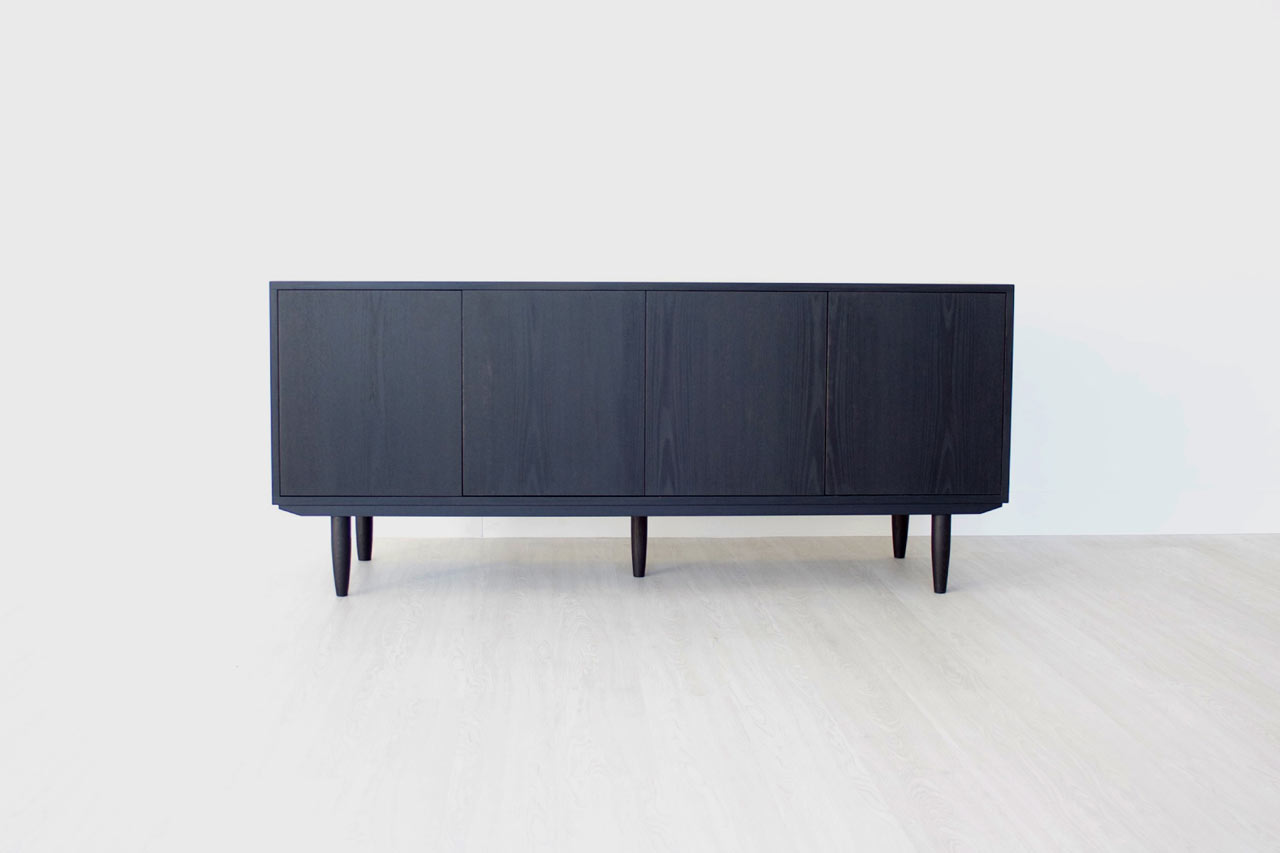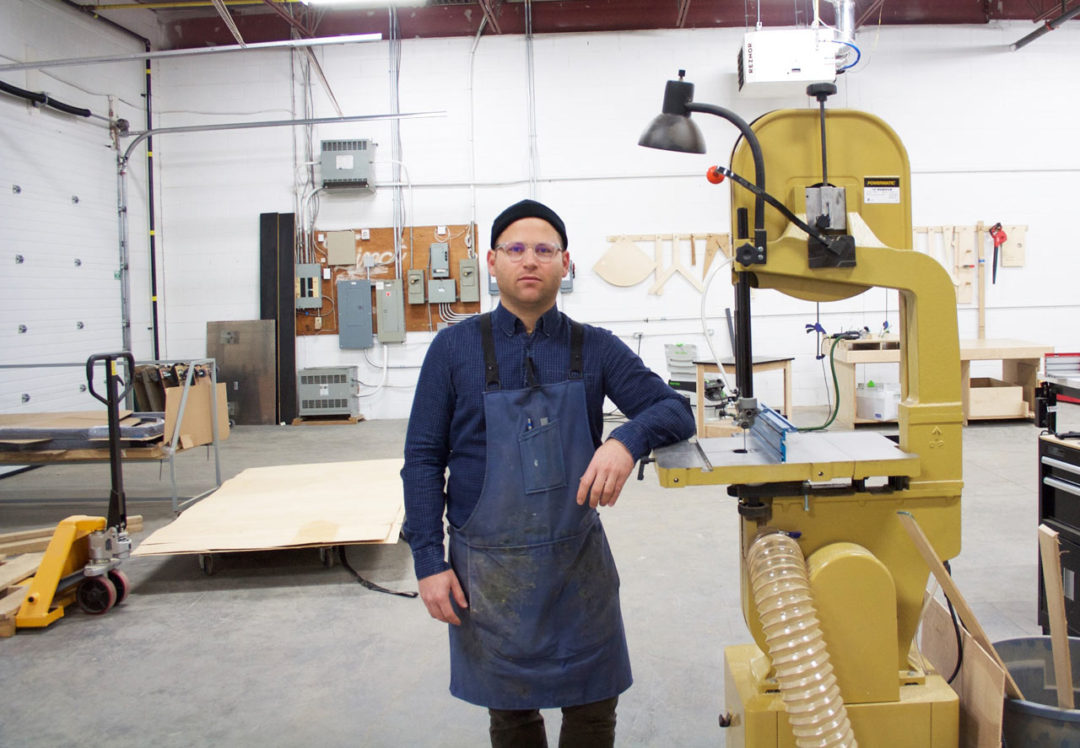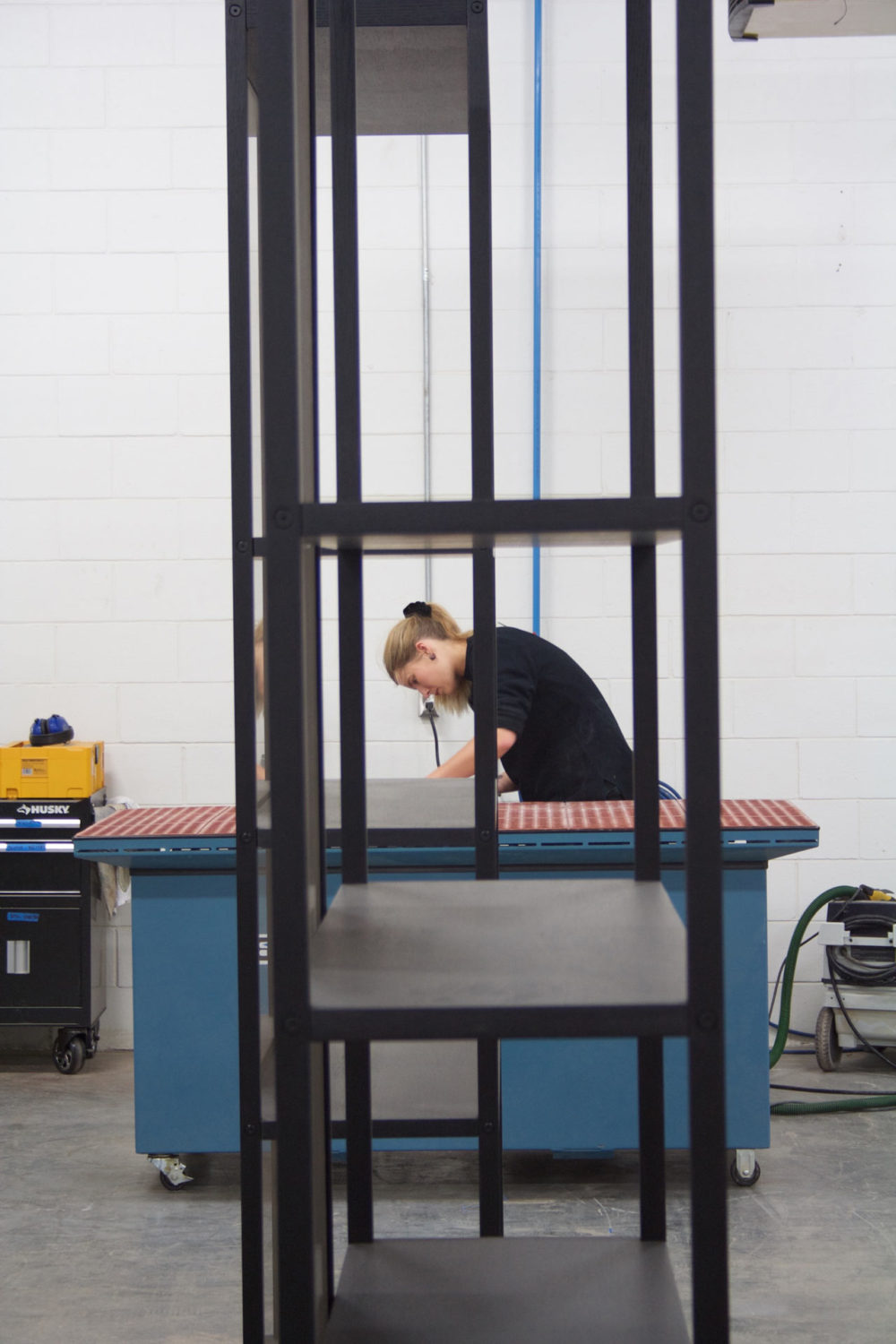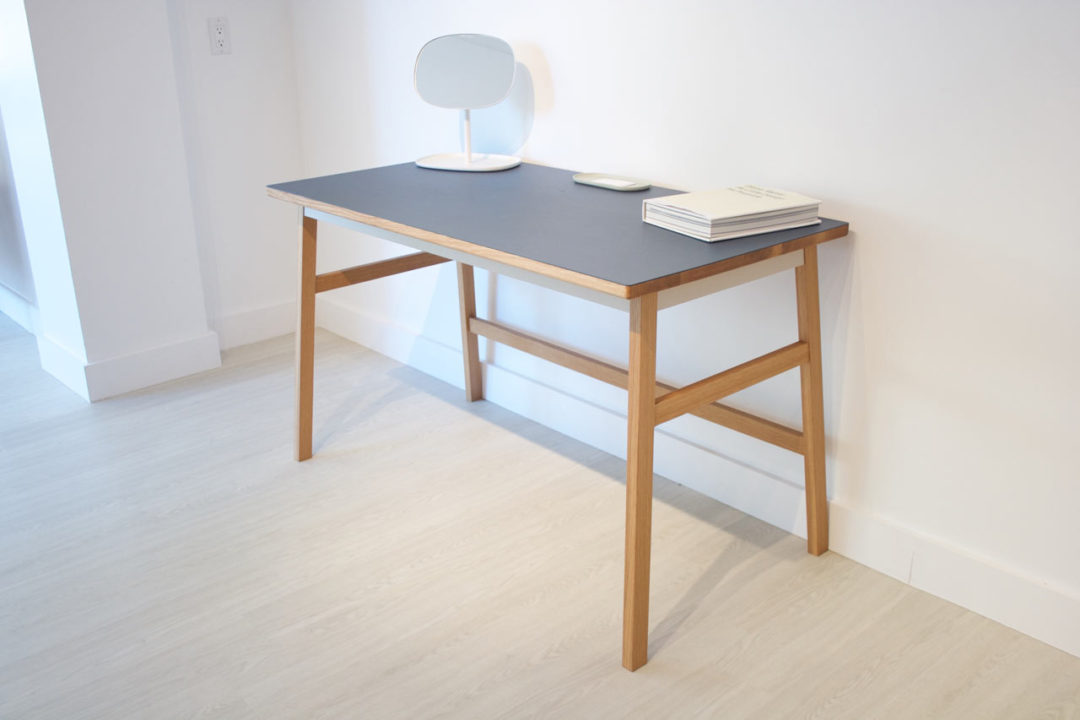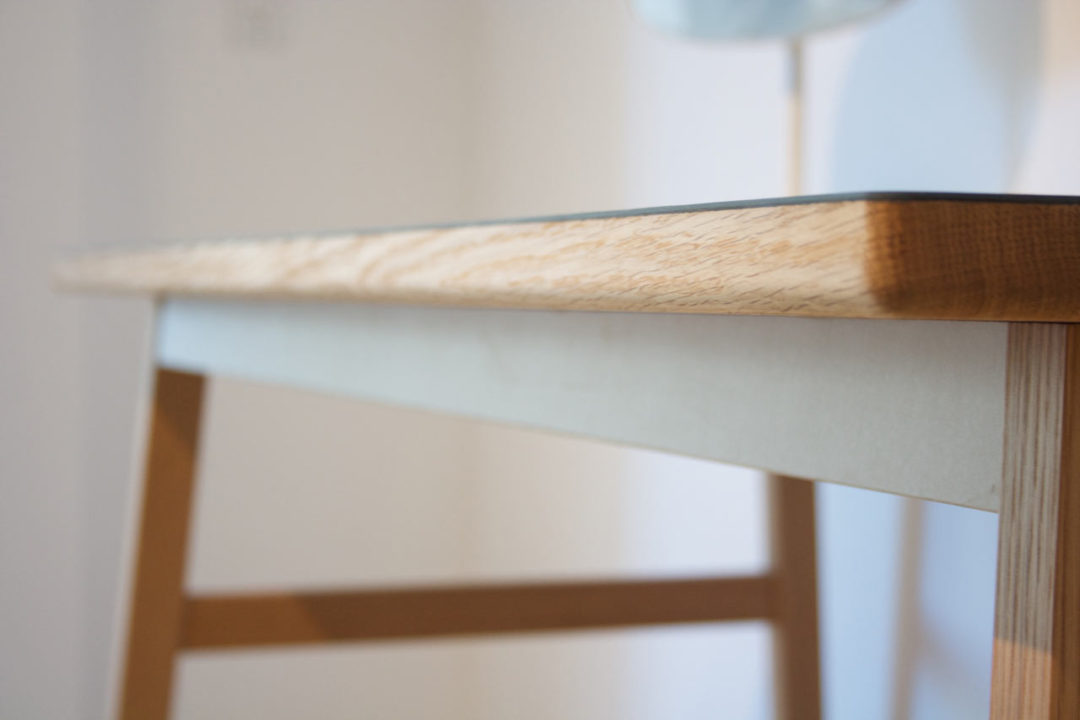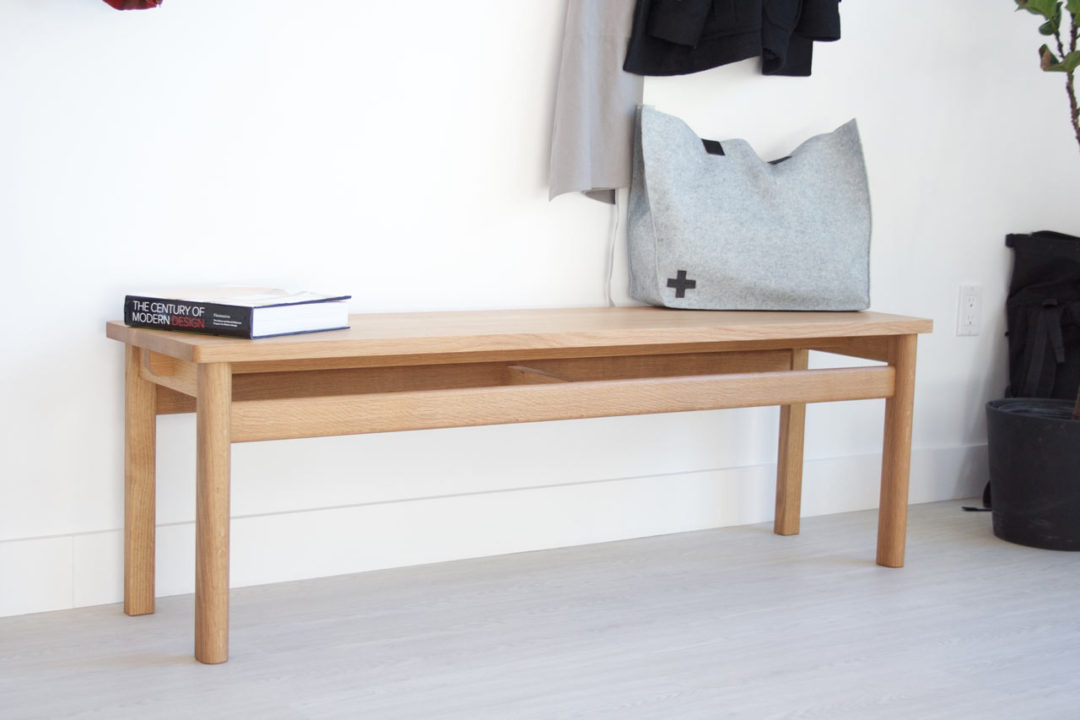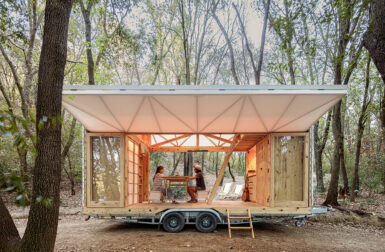We’re headed to IDS Toronto in January as a sponsor of their Maker section. We’re proud to sponsor such a great group of makers because it has always been our mission to share the work of those designers, makers and brands who are innovating, making a difference or creating design that betters our lives. Makers have often been at the center of this mission, bringing their uniqueness, entrepreneurial attitude, and creative spirit to the design world, offering a refreshing alternative to big brands. The makers will share their designs and products with over 12,500 distributors and industry professionals across Canada and 26 other countries; and 34,000 design savvy consumers. The Maker section is perfect for businesses that have manufacturing capabilities, and are looking to expand distribution.
One of these such makers is Dustin Kroft. He didn’t go to design school… however, he grew up building structures with blocks and scrutinizing the works of Frank Lloyd Wright. Dustin started a company but knew that he was destined for something else, and after taking night classes in furniture making, he sold his company and opened up a small furniture shop.
Dustin launched his company, KROFT, at this past year’s IDS Toronto with 7 pieces, and will be back to showcase even more in 2017. We’re looking forward to seeing what he’s got. In the meantime, I talked to him about making furniture and running a small business:
How did you get into woodworking?
I used to make and re-finish furniture growing up using whatever tools I had at my disposal. Several years ago, I discovered a continuing education program for furniture making at a local college so I enrolled. It was all I needed to become infatuated with woodworking and feel comfortable enough to continue my own self study in my “garage shop”.
How long has your design studio been in business and how has it changed over time?
We are fairly new. I was in a different business for 11 years before starting KROFT in March of 2015. When we set up shop, we really had no direction and I was ok with that. I had faith in the process and knew that a product line of some sort would develop organically. It did and we ended up launching to the public with that collection at IDS in January.
It showcased my first designs which were a little selfish. I had been dreaming of designing and making furniture for so long so I had some products and ideas that had to get flushed out. Since then the principles ( Meticulously crafted furniture. Slow and thoughtful design) have remained constant but we have become much more focused. Our creative process and product management strategy is now centered around tables and we have a much broader sense of the different opportunities in the marketplace.
Having a focus on tables allows us to develop our core competencies. We still sell furniture that compliments our tables.
How many people work with you at Kroft?
We are a team of 5. We have 3 skilled craftsmen and I have a part time designer that helps me with the overall marketing and presentation of our product line.
As a small business owner, what are some of the challenges that you face?
Small businesses are extremely tough to run – especially during the start-up phase. Most small business owners have to wear multiple hats and that can dilute the owners effectiveness. Other common challenges for every business are the development of infrastructure and systems, cashflow management and staying on track. For me, I find one of the greatest difficulties is trying to manage sales efforts in tandem with developing new product ideas and any other design driven initiatives. When I get into my creative zone, the rest of the world blacks out. That usually just means working extra hours to make sure my list gets checked off every day.
You say your products are handmade. What kinds of techniques are you employing in building each piece?
I think to us it just means employing traditional furniture methods and having an intimate relationship with the furniture. At this point in our business, we operate and build each piece as if we run a one-person custom shop. Each piece gets that much attention. We also hand apply our finishes and have a much more personal relationship with the materials from start to finish. I think the main point is that it isn’t off-the-shelf. The experience of buying is much more personalized and the products are made with specific customers needs in mind.
Your work is minimalist with subtle details – is that how you would describe your pieces?
I think that just about sums it up. I don’t really know how to describe it any better because I am not very cerebral about what I want each piece to be. The designs come from somewhere inside of me (at the most inopportune times) and then usually evolve throughout the prototyping process from raw concept to finished product. Quiet, understated and honest design is what clicks for me right now. Instead of focusing on incredibly overt design elements, we focus on small things like reveals and the relationship between the different transitions in the piece. I also believe that material selection and craftsmanship hold an equal amount of importance as the design.
How has modern technology (if at all) helped your business – either for manufacturing and/or marketing?
I am a big advocate for technology in business. I don’t think we have reached enough of a critical mass to really employ technology in a beneficial way. As for manufacturing, we don’t use any automated equipment in our shop. We will outsource the manufacturing of some jigs to CNC shops which can be helpful in improving our precision and efficiency.
What is the most challenging piece of furniture you’ve ever made and why was it so?
Haven’t made my personal Last Supper yet.
What’s unique/interesting/different about Canadian design? In other words, what makes Canadian design, Canadian? :)
I think the answer to that is it’s still in the oven baking. There is definitely no shortage of talented artists, designers and makers in Canada. I discover new Canadian designer/makers all the time and I am fascinated by all of them. In my humble opinion I think our design identity right now is similar to our society – very diverse. I don’t know if there will ever be any kind of singularity to Canadian Design. Either way, for Canadian design to grow and mature, we need Canadians to make Design a priority. From what I see, I think we are making progress on that front.
What piece will you be bringing to IDS Toronto in January?
We are working on a special edition of one of our tables for the show but we haven’t fully decided yet what else we will be exhibiting. Shows are exciting to me because they present an incredible challenge; How to present your work in an engaging and thoughtful way. You will probably see some carefully selected work from our current collection.
Visit Kroft online at kroft.co or on Instagram. Register for IDS Toronto here.


